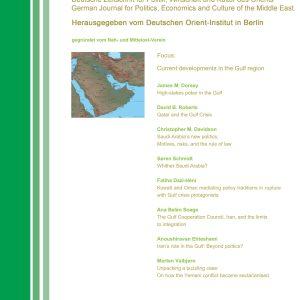Description
The speed at which Taliban fighters captured Kabul on 15 August – after having waged nearly two decades of war with the Afghan government and its Western allies – caught most analysts by surprise. But the Taliban’s transition from a militant force to the governing power of Afghanistan has come with numerous challenges. The major challenge in this regard was the formation of an interim cabinet by maintaining internal cohesion within various factions of the Taliban movement. When the new interim administration – or the caretaker cabinet – was announced by the group, it was seen to be composed of almost exclusively Pashtun Taliban officials – largely clerical, all male and mostly the old guard – who had previously held ministerial positions in the first government of the Taliban that ruled Afghanistan in the 1990s. But the rise of the Haqqani Network within the Taliban ranks is visibly evident in this new interim government. Unlike the 1990s, when the leader of the Haqqani Network was kept away from the Taliban’s real decisionmaking circle, the Haqqani Network – presently under the leadership of Sirajuddin Haqqani – has become one of the most influential decision-making authorities in Kabul. Due to its military might and access to resources, the Haqqani faction has become dominant within the Taliban in relation to the Kandahari faction, which traditionally held sway over the movement. This article will attempt to understand what the rise of the Haqqani Network means for the traditional Taliban leadership. Will it pose a greater risk of internal fragmentation within the Taliban movement? How the Haqqani Network might influence the Taliban movement in the future will also be discussed. The author argues that the ascendency of the Haqqani Network does not imply that the Taliban movement will fragment in the near future. It is quite unlikely that the rivalry between the traditional Taliban leadership and the Haqqani Network, which is often exaggerated by some analysts, will pose a major challenge to the Taliban movement. The Taliban may have a number of internal factions, but their longstanding strategic aims and objectives have remained almost the same, which has encouraged differing fractions within the movement not to break away from the core group. Therefore, since taking power, the Taliban has managed to retain internal cohesion and avoid any kind of fragmentation within the organisation, as the Taliban leadership is reluctant to cross the internal red lines that might threaten the group’s cohesion in the coming period.
Anchita Borthakur is a research scholar in the School of International Studies, Jawaharlal Nehru University (JNU), New Delhi, India. Her research interests include Afghanistan, security studies, migration, ethnicity, religion and politics. She has published research articles in a number of wellrespected journals and contributed chapters to edited volumes




Reviews
There are no reviews yet.